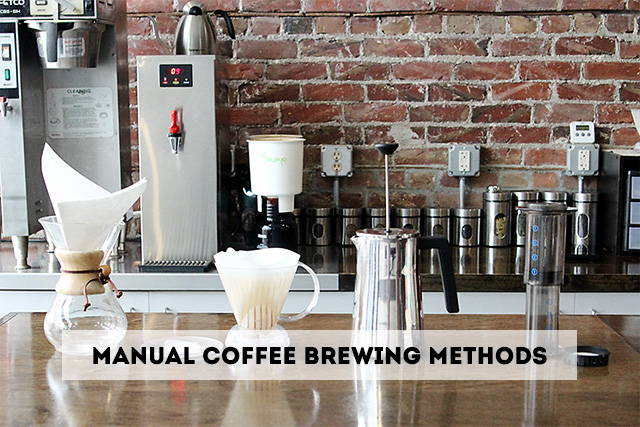 About a month before our big move from Nebraska to New Jersey, our hardworking Keurig machine sputtered and brewed its last cup of coffee. Although we both relied on the convenience of the Keurig for single servings of coffee throughout the day, JB and I chose not to replace it, as it would end up in storage only a few weeks later.
About a month before our big move from Nebraska to New Jersey, our hardworking Keurig machine sputtered and brewed its last cup of coffee. Although we both relied on the convenience of the Keurig for single servings of coffee throughout the day, JB and I chose not to replace it, as it would end up in storage only a few weeks later.
Instead, we pulled out the old-fashioned drip coffee maker and — blech! — reheated our refills in the microwave. Remembering that I used to use a simple pour-over coffee brewer to make individual servings of coffee in college, I went online to purchase a new one.
In addition to cheap plastic cones, however, I discovered an array of fancier manual coffee brewing methods. I’ve had French Press coffee before and seen the Chemex sold in stores, but other methods, like the Clever and Aeropress, were unfamiliar to me.
Now, I’m not a coffee connoisseur, but I drink enough of it to appreciate that different brewing methods produce different flavors. So I reached out to Kait Berreckman, training manager at Aromas in Omaha, for a lesson in manual coffee brewing.
“The main thing with manual brewing is that if you like the way it tastes, you did it right,” she explained. “However, you want to follow a few basic guidelines.”
Here are Kait’s five main tips for manual brewing coffee:
General Guidelines for Manual Brewing
1. Use clean water. Unfiltered water can muddy up your flavors. Even a filtered pitcher can make a big difference. And make sure the water’s at least 202-degrees Fahrenheit, or a few minutes off a boil.
2. Rinse your paper filters. This helps pre-heat your brewer and whatever you’re brewing into AND removes some papery taste from the brew.
3. Invest in a good burr coffee grinder. Blade grinders can’t help you achieve the particular grind size you want because of the way they chop and hack at the beans. As a general rule of thumb, a finer grind is going to give you more flavor and a coarser one will give you less.
4. Use good coffee. Buying your coffee from a local shop increases your chances of getting freshly roasted coffee, and that will always taste better than old, stale coffee. Even if it’s $40 per lb. Blue Mountain coffee, if it’s old, it will suck. Also, if there’s no roast date on the package, don’t buy it!
We find that we start to like certain coffees in certain brew methods. I love bright, sweet floral-washed Ethiopian coffees in paper-filter methods like the Clever and the Chemex because the clean, thinner body lets some of those more delicate flavors shine through. Deeper, earthier coffees like Aroma’s Cast Iron blend are great in the French Press and Aeropress, where big, smokey, bittersweet flavors are supported with a big body.
5. Treat manual brewing like a science project. While you’re figuring out how you like to brew, try to only change one variable at a time. This will help you refine your method faster! I definitely suggest trying many with the SAME coffee — a coffee you know you like.
Of course, I had to ask Kait what she thought of Keurig machines: “Keurigs are a scam! You end up paying WAY too much for sub-par coffee and brew it with water that isn’t hot enough.” She passed along this single cup coffee comparison article that’s worth a read (and may change your mind about the glory of the Keurig).
Over the next four weeks, I’ll be sharing more of what I learned from Kait and the baristas at Aromas in a new series about manual coffee brewing methods. Throughout October, come back for step-by-step directions for making a perfect cup of French press, Chemex, and Clever coffee.
Let’s become coffee connoisseurs together!
PS – Did you know it’s better to drink coffee at certain times throughout the day? And Happy National Coffee Day!
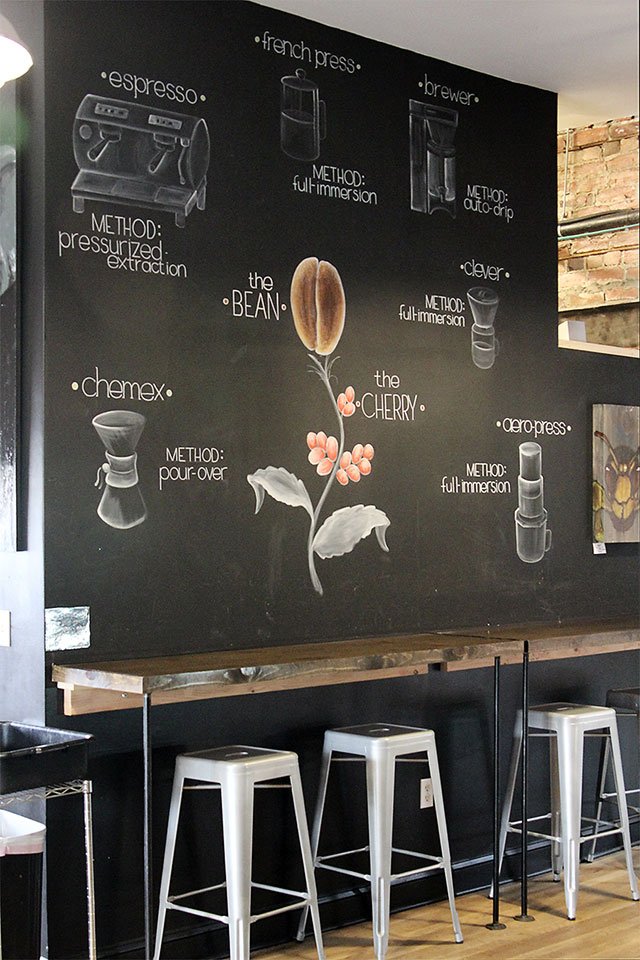
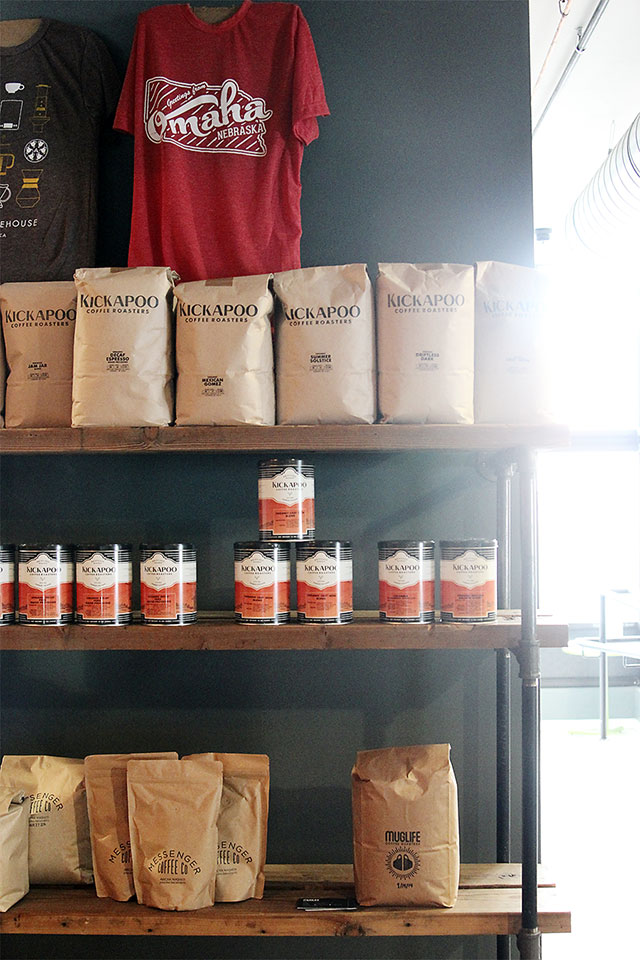
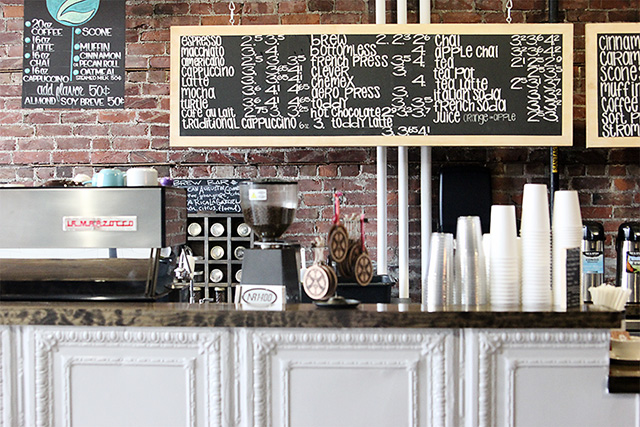
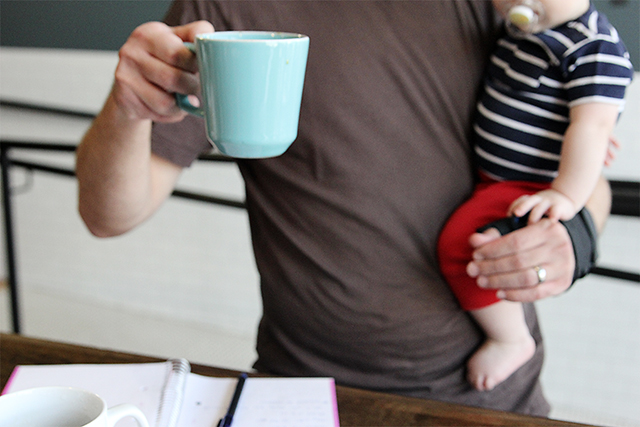



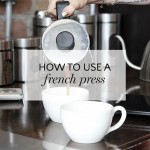




I’m so happy you are doing this! I got rid of my keurig about 4 months ago because I never liked the taste. Right now, I’m using high quality coffee with a small “normal” coffee maker but I’m thinking of trying out a French press or other methods to get something a little stronger. My current coffee maker is NOT fancy, so it could be I need to get something better quality. It’s still better than the keurig though! 🙂
I’m excited that you’re excited for the series! My parents have a Keurig, and I’ve been using it when I’m in a hurry for a cup of coffee. But it definitely doesn’t compare to the manual brew methods I’m going to be discussing. The quality of the beans you use (and if you grind them fresh) will make a difference with your automatic coffee maker, but you’ll taste the biggest difference if you use a manual brewing method instead. A French Press will definitely give you a stronger flavor, if that’s what you like.
When we got a Keurig I thought it was the greatest thing ever. That, in addition to our Illy gave us a choice of coffee or espresso/cappuccino. But then came the French Press. Since then, I can’t go back to the Keurig. No matter the pod – bold, breakfast blend or other, it just can’t compare! The only thing we use it now for is the hot water when we want tea.
I’m interested in learning about the other processes/machines, but I’m afraid if it’s even better than the French Press, we’ll have to buy another apartment just for all our coffee machines.
If you replace your Keurig with a simple kettle to boil water for tea, you can then use that counter space for an assortment of manual coffee makers!
One of my friends recently posted an article “Why I kicked my Keurig to the curb,” Apparently it is impossible to clean the internal resevoir in the machine. If you read the article, you will be happy that your machine bit the dust!
Thanks for sharing! I’ll have to search for the article — it sounds really interesting, and I’m already feeling grossed out just thinking about what might be in the water reservoir.